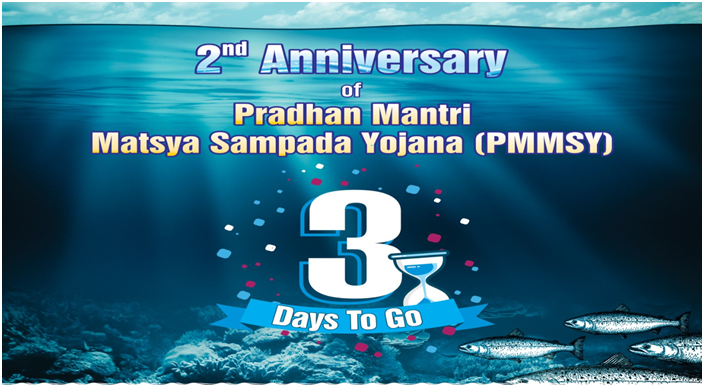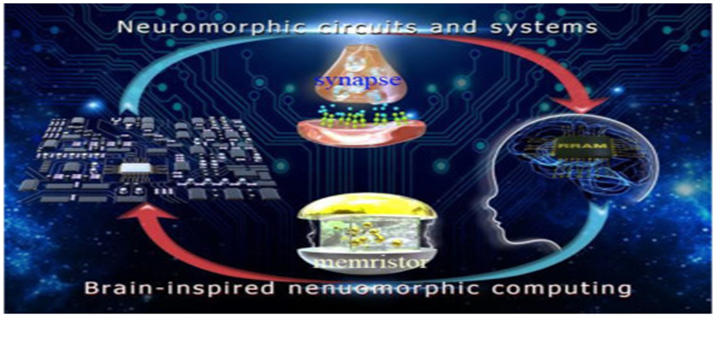2nd Anniversary of Pradhan Mantri Matsya SampadaYojana (PMMSY) (GS Paper 2, Economy)

Why in news?
- Recently, the Pradhan Mantri Matsya SampadaYojana (PMMSY) accomplished its successful second anniversary.
Details:
- The Union Ministry of Fisheries, Animal Husbandry and Dairying launched Booklet on PMMSY & its achievements, Matsya Sampada: 3rd edition of DoF Newsletter, Tilapia Action Plan as a part of Export Diversification, Scampi Action Plan, National Seed Plan: 2022-2025 etc.
- The Government of India, as part of the ‘AtmaNirbhar Bharat’ package, introduced the Pradhan Mantri Matsya SampadaYojana (PMMSY) with investments to the tune of Rs. 20,050 crores, highest ever investment in the sector.
Fisheries Sector form 2019-2022:
- Though Covid-19 has impacted the sector adversely, but Fisheries growth rate in last 2 years, shows an impressive growth of 14.3% from 2019-20 to 2021-22.
- Further, fish production reached an all-time high of 141.64 lakh tons during 2019-20 to 161.87 lakh tons (provisional) during 2021-22.
- Similarly in exports, India have achieved the all-time high exports of 13.64 lakh tonnes valuing Rs 57,587 crores (USD 7.76 bn) dominated by exports of shrimps. At present India is exporting to 123 countries.
Aquaculture:
- Earlier, Marine fish production dominated India’s total fish production. However, with adoption of science-based practices and technology in year 2019, 74% of fish production was contributed by inland fisheries and the rest 26% by marine fisheries.
- In this scheme, Aquaculture promotion will be undertaken especially in the saline and alkaline areas of Northern India.
- Another key concern is Aquatic health management and focus is laid on the address of diseases, anti-biotic and residue issues which will be supported by an integrated laboratory network.
Credit Boost:
- To help meet working capital and short-term credit requirements of the sector, the Government has extended the Kisan Credit Card (KCC) to Fishers, Fish Farmers, Self Help Groups (SHGs), Joint Liability Groups, Women Groups, etc.
- To strengthen the fisheries infrastructure and augment fish production, as of date a total of 19 fishing harbors and fish landing centers proposals have been approved to the tune of Rs. 912.03 crores.
- Through the PMMSY, it is envisaged that an estimated 68 lakh Employment will be generated by the end of 2024-25.
About PMMSY:
- Pradhan Mantri Matsya SampadaYojana (PMMSY) was launched on 10th September 2020. The aim of the scheme is to bring about Blue Revolution through the sustainable development of the fisheries sector over a period of five years (2020-2025.) PMMSY was announced in the union budget 2019-20.
- Prime Minister envisioned PMMSY as a tool of AtmaNirbhar Bharat towards the purpose of rural development by utilizing rural resources and boosting rural economy in a rapid way. PMMSY can be a key factor for augmenting livelihood of rural sector of the nation.
- The main motto of PMMSY is ‘Reform, Perform and Transform’ in the fisheries sector.
- The reforms and initiatives in PMMSY scheme have been inculcated in core & trunk infrastructure development, modernization of Indian fisheries, especially the push for new fishing harbours/landing centres, modernisation and mechanization of traditional fishermen crafts-trawlers-deep sea going vessels, provision of post-harvest facilities to reduce post-harvest loss, cold chains facilities, clean and hygienic fish markets, two wheelers with ice boxes and many more.
- Fishermen are provided with insurance cover, financial assistance and a facility of Kisan Credit Card as well. PMMSY has set a way forward to enhance its utilization by invigorating rural economy.
Interventions:
- The interventions in the scheme have been adequately developed to cater to multi-pronged aspects in terms of people, process and technology which are the 3 important pillars of continued growth and change.
- These 3 pillars comprise various aspects across the chain: sustainable production practices; adequate processing infrastructure creation; target marketing for end consumer; inclusive policies and ample regulatory frameworks for adoption.
- To give right impetus to the state initiatives though technology adoption, optimal utilization of fisheries and capacity building, the Department has sanctioned proposals from different states for leveraging innovative technologies under Ministry’s flagship scheme of Pradhan Mantri Matsya SampadaYojana (PMSSY).
WHO releases global guidelines to boost helmet use, curb pedestrian deaths
(GS Paper 2, International Organisation)
Why in news?
- Recently, the World Health Organisation has come up with two guidelines for policymakers on helmet use and pedestrian safety to help curb the global scourge of road traffic deaths and injuries.
- The guidelines, co-written by experts from the Indian Institute of Technology (IIT), on the use of helmets for riders of powered two and three-wheelers and on pedestrian safety, include new evidence and case studies.
Key Highlights:
Helmet:
- The road safety expert pointed out that the use of powered two and three-wheeled vehicles are increasing rapidly in many developing countries, yet the use of quality helmets often lags behind.
- Nearly 30 per cent of all crash fatalities reported to WHO involve powered two and three-wheelers, with 43 per cent of all road traffic deaths in the WHO South East Asian Region involving these types of vehicles.
- Full-face covering helmets which are properly strapped on, reduce fatal injuries by up to 64 per cent and brain injuries by up to 74 per cent.

Pedestrian:
- Globally, pedestrians are some of the most vulnerable road users. Pedestrian deaths rose at nearly twice the rate of all other road crash deaths between 2013 and 2016, they said.
- Despite this, pedestrian deaths appear to be grossly under-reported in many developing countries.
- Pedestrian deaths account for around 30 per cent of all deaths from road traffic crashes in India. In some large Indian cities, the proportion of pedestrians killed is up to 60 per cent of all road traffic deaths.
- Improving road environment, strengthening legislation, and enforcement, including with actions to educate road users and change their behaviours, can significantly improve pedestrian safety.
Burden of road traffic crashes:
- According to the World Health Organisation (WHO), road traffic crashes kill over 1.3 million people every year more than two every minute with nine in 10 deaths occurring in low- and middle-income countries.
- Globally, road traffic crashes are the leading cause of death among children and young people aged between 5 and 29 years.
Molecular neuromorphic computing technology
(GS Paper 3, Science and Tech)
Why in news?
- In a move towards developing devices that can mimic the workings of neurons in the brain, researchers from Indian Institute of Science, Bengaluru (IISc), have designed neuromorphic devices using organic materials that have not been used hitherto.
Background:
- Artificial Intelligence and machine learning can cause a veritable revolution in the working of the world today, yet their development is hindered by the fact that the present state of the art in electronics does not match up to what is needed.
Organic materials:
- Organic materials had been considered the poorest of different material types in making computing components because they were fragile and unstable.
- They established that organic materials can compute reliably and, in some aspects, are even better than inorganic materials.
The plastic brain:
- The human brain which inspired the researchers in their workvastly outperforms any artificial electronic analogues in terms of its learning, cognition and decision-making ability.
- Its remarkable performance uses up just 20 watt of power over a space of 1260 cc. Some of the properties that it exhibits which are desirable include interconnectedness and reconfigurability.

Challenges:
- Molecular materials are characterised by interactions between molecules and ions, which then present a multi-dimensional landscape of parameter space that can be tinkered with to develop suitable functionalities.
- The question was whether they could manipulate these many-body interactions to achieve plasticity and reconfigurability in the devices. They did this by measuring the current-voltage curves as a function of temperature over a wide range. They could capture functionalities spanning bipolar, unipolar, non-volatile, and volatile memristors.
- The challenge was that during low-temperature measurements, in molecular memristors, the switching responses quenched, or flattened out as temperature was lowered.
Way Forward:
- The researchers are fairly confident that they will be able to develop a functional neuromorphic platform based on metal complexes which could be world’s first molecular neuromorphic technology.




